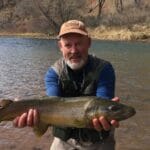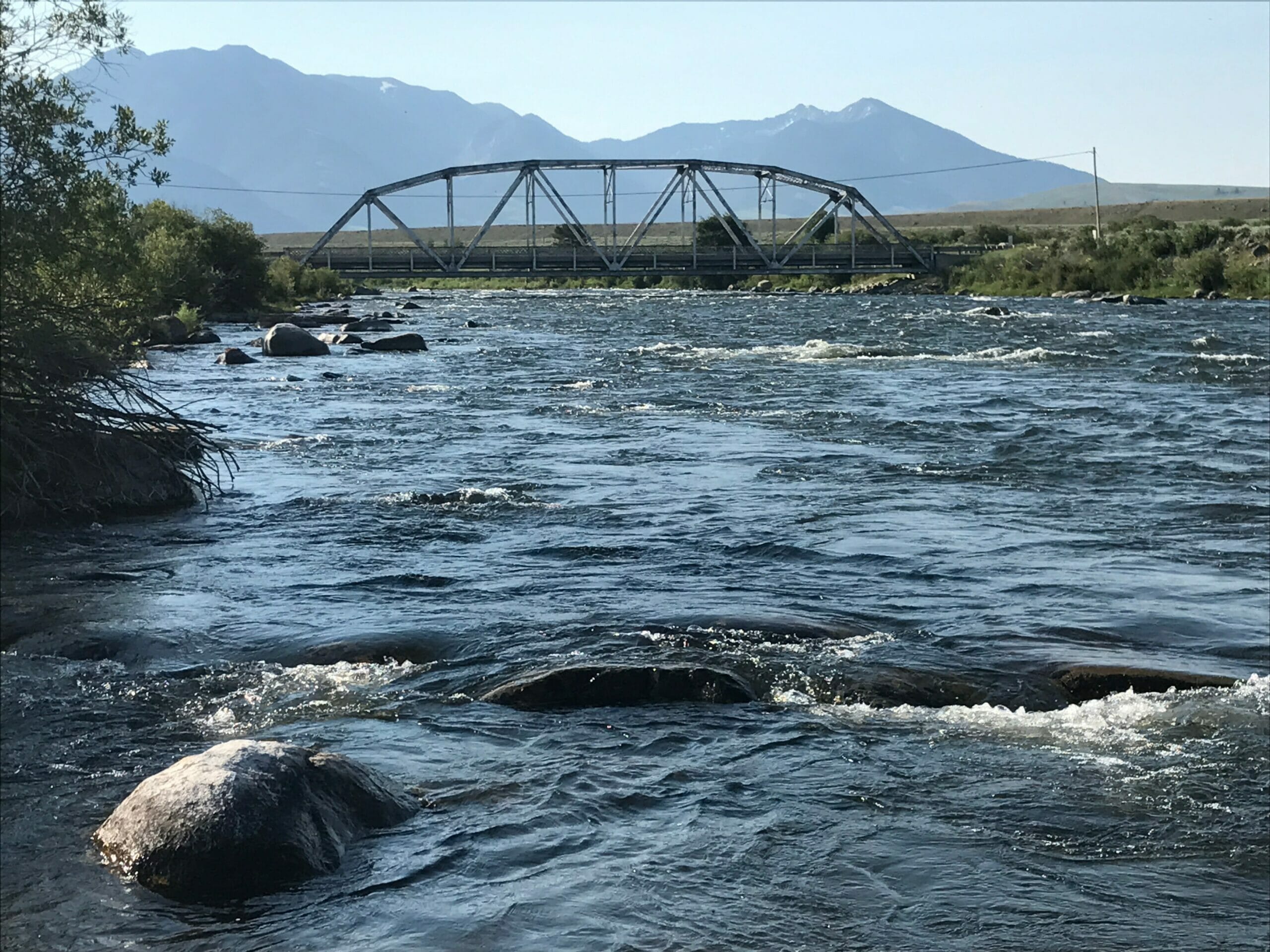The original plan was to drive east to meet my wife’s family in North Carolina. The time away from her mother, sisters and Gus’ cousins had been torture, but every state along our route was preparing to open up while the virus was still out of control. As we saw it, forcing customers and employees to risk the health of loved ones felt more like closing down. It seemed safer to tag along on my brother’s trip to Montana.
I was proud of New Mexico’s relatively sane approach, so I wasn’t keen on doing that trip either. Then someone shot a racism protester in Albuquerque. India Palace, an ethnic restaurant in Santa Fe, was severely vandalized by supremacists. New Mexico’s success in checking the virus eventually waned, and at its best had never extended to the Navajo Nation, which had been hammered from the start.
Last Fourth of July, I celebrated on the San Juan River with a Vietnam veterans fly fishing group. They taught me to never take my country for granted. They also taught me that some people don’t have the option of forgetting things and it’s the least one can do to not let them walk alone. We must remember, they told me, or to be more exact, “Don’t forget.”
I began the trip north batting 500 on their advice, because I wanted so badly to take my country for granted. Otherwise, I was on a mission to remember, hoping to capture a “counting the cars on the New Jersey Turnpike” moment, something to stir in me a fundamental recognition of my country. Driving deep into the West usually does the trick.
Not surprisingly, my spirit grew lighter when we reached the Wind Rivers, with all their water and green and pronghorns, on the second day. When we crossed Togwotee Pass and were greeted by the Grand Teton, I was brand new. As if by design, we arrived in Ennis right when the fireworks started. They were decidedly unspectacular beneath a rising full moon, but so what?
The metric of stream miles makes Montana a great place to hide, and we made the most of that on the Beaverhead, Jefferson, and on the little Madison back channel that ran by the place we were renting. We expected the crowds at Black’s Ford, it being a holiday week. As our wives and kids float with the hordes, my brother and I fished near a petri dish parking lot full of watercraft and sunburns.
The river was named after James Madison, the U.S. Secretary of State during Lewis and Clark’s expedition. The Jefferson River was named after the president, and the Gallatin River, the third fork of the mighty Missouri, was named after Albert Gallatin, who oversaw a treasury that owed its size and power to an economy built on free labor and, as the case would soon become, on raw materials acquired for the low, low price of lopsided warfare against the land’s historic inhabitants.
Why is this healing so important? The short answer is I don’t know. I do know that healing rivers is important. In addition to sustaining trout and other life, America’s rivers have spawned human cultures — natives yes, but also the recent arrivals. It’s difficult to envision the Hudson, Mississipi, Columbia, and Rio Grande without also seeing human faces.
We logged a lot of time on the lawn, drinking cocktails and slapping mosquitoes. On any given evening, we might have watched my son honing his dry fly chops in the back channel down the slope, the diving resident osprey, or the moose my niece named Shelby as she shepherded two calves around the alder thickets. Whitetails grazed the fields, and cloud shadows played across the mountains beyond.
Sometimes my mind would seize at the vast empty space between the valley’s terraced moraines and the mountaintops and a time in the past when grizzly bears roamed freely between. There was space as well between the thousands of years the landscape represented and the early 1800s when the West’s human history effectively began. At a nearby boat ramp a weathered info kiosk described tipi technology and told of tribes that had inhabited the valley as though they had gone extinct like the dinosaurs, as though their direct descendants weren’t actually alive, eking out an existence a couple hundred miles away on land they hadn’t chosen.
Rest assured that my acknowledgement of these facts diminished neither my experience of Montana nor my opinion of places like it where great swaths of human history have seemingly been forgotten. At the same time as I don’t hate myself for my role in the forgetting, I know that people of European descent must welcome, and work to comprehend, the perspectives from those who were damaged. If we harbor any hope of healing wounds instead of constantly reopening them, this must happen immediately.
Why is this healing so important? The short answer is I don’t know.
I do know that healing rivers is important. In addition to sustaining trout and other life, America’s rivers have spawned human cultures — natives yes, but also the recent arrivals. It’s difficult to envision the Hudson, Mississipi, Columbia, and Rio Grande without also seeing human faces.
Given the undeniable role that humans also play in sustaining life, it should follow that efforts to heal human systems and populations would be to the universal good. As with rivers and trout ecosystems, human systems can be intact, fragmented, nonfunctional or unsustainable without high levels of outside inputs. Right now in America, we have a lot of problems with our human habitat.
Let’s deal with them as though they were a river, by protecting, reconnecting, restoring and sustaining. Those words are good enough for (native) trout. They should be good enough for us.
Toner Mitchell is TU’s water and habitat coordinator for New Mexico. He lives and works in Santa Fe.



